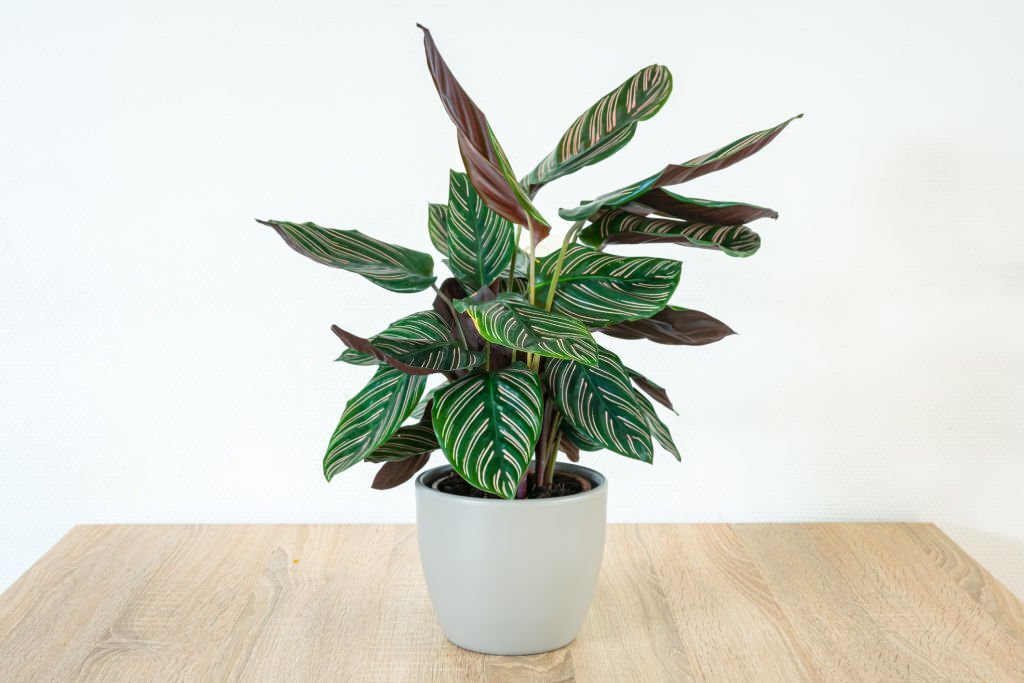Table of Contents
You may be wondering why you should care for a Calathea. Perhaps you’re not familiar with this plant, or you’re not sure why it’s important to keep it healthy. In this article, we’ll explore some of the reasons why you might want to care for your Calathea.
One of the main reasons to care for a Calathea is because they’re beautiful plants that add a touch of elegance to any room. They also purify the air and improve your indoor air quality. Another reason to care for your Calathea is because they’re easy plants to care for, and they’re very forgiving if you make a mistake. So if you’re new to gardening, or if you don’t have a lot of time to spend on plant care, a Calathea is a great choice for you.
Now that we’ve talked about some of the reasons why you might want to care for your Calathea, let’s explore how to care for this beautiful plant. The first thing you need to know is that there is no one-size-fits-all approach to caring for a Calathea. The care you provide your plant will depend on your specific environmental circumstances. With that in mind, let’s take a look at the three most important factors to consider when caring for a Calathea: water, light, and temperature.
People commonly experience difficulty caring for their Calathea plants because they don’t know how to properly meet the plant’s needs. For example, people often don’t water their plants enough, which can cause them to die. Additionally, Calatheas need plenty of indirect light and should not be exposed to temperatures below 50 degrees Fahrenheit. Fertilizing your Calathea is also important, but you should avoid using fertilizers with high levels of nitrogen. If you follow these tips, you’ll be well on your way to having a healthy and beautiful Calathea plant!
What is a Calathea?
Calatheas, or Marantas, are tropical plants that are typically grown as houseplants. They are part of the Marantaceae family and are related to the arrowroot plant. There are many different varieties of Calathea, with some featuring green leaves and others with variegated leaves. All Calatheas require indirect light and should not be exposed to temperatures below 50 degrees Fahrenheit.
How to care for a Calathea
The best way to care for your Calathea is to read the plant’s care tag, which will provide specific instructions based on your environmental circumstances. However, there are some general tips that will help you care for your Calathea no matter where you live.
First, make sure your Calathea gets plenty of indirect light. They do best in a spot that is bright, but not direct sunlight. If your plant isn’t getting enough light, it will start to stretch and grow taller in an attempt to reach the light.
Second, water your plant regularly, but make sure the potting soil is always dry to the touch before watering again. Calatheas don’t like wet feet, so it’s important to make sure the potting soil is well-drained.
Third, avoid fertilizing your Calathea with high levels of nitrogen. Fertilize your plant with a balanced fertilizer instead, and only fertilize once every two to three months.
Fourth, make sure your plant’s environment is comfortable. Calatheas prefer temperatures between 50 and 85 degrees Fahrenheit, so keep that in mind when you’re choosing a spot for your plant.
Fifth, mist your plant regularly to keep it healthy and hydrated.
When to water a Calathea
How often you water your Calathea will depend on the potting soil you use, the temperature, and the humidity level. However, as a general rule, you should water your plant when the potting soil is dry to the touch. If you live in a humid environment, you may need to water your plant more often than someone who lives in a dry climate.
How much light does a Calathea need?
Calatheas need plenty of indirect light to thrive. They do best in a spot that is bright, but not direct sunlight. If your plant isn’t getting enough light, it will start to stretch and grow taller in an attempt to reach the light.
Temperature requirements for a Calathea
Calatheas prefer temperatures between 50 and 85 degrees Fahrenheit, so make sure you keep that in mind when you’re choosing a spot for your plant. They can tolerate temperatures as low as 50 degrees Fahrenheit, but they should not be exposed to temperatures below that.
Fertilizing tips for a Calathea
Fertilize your plant with a balanced fertilizer once every two to three months. Avoid fertilizing with high levels of nitrogen, as this can be harmful to your plant.
Propagating a Calathea
If you want to propagate your Calathea, you can do so by taking a cutting from the tip of a healthy leaf. Make sure the cutting has at least three leaves, and then place it in water until it roots. Once the cutting has rooted, transplant it into soil.
Problems and solutions for caring for a Calathea
There are a few common problems that can occur when caring for a Calathea. Brown leaves can be a sign of overwatering, while yellow leaves may indicate that the plant is not getting enough light. If your plant has spider mites, you will see webbing on the leaves. To treat spider mites, mist the plant with a solution of water and dish soap, and then rinse the leaves off with water.
The benefits of owning a Calathea
Calatheas are beautiful plants that add life and color to any room. They’re also easy to care for, so they’re perfect for busy people or those who don’t have a lot of gardening experience. Additionally, Calatheas can help improve the air quality in your home by removing toxins from the air.
Conclusion
In conclusion, if you’re looking for a beautiful and easy-to-care-for houseplant, the Calathea is a great option. Follow these tips to help your plant thrive, and enjoy watching it grow and change over time. In today’s article we talked about the benefits of owning a Calathea and how to care for one. First, let’s talk about what a Calathea is: it’s an easy-to-care-for houseplant that adds life and color to any room. Second, you should make sure your plant has enough light but not too much; they don’t like direct sunlight or wet feet. Thirdly, avoid fertilizing with high levels of nitrogen as this can be harmful to your plant. Fourthly, if you want to propagate your Calathea take some cuttings from the tip of healthy leaves then place them in water until they root before transplanting them into soil. Fifth, mist your plant regularly. Sixth, make sure the potting soil is dry before watering and that the plant’s temperature range falls between 50 and 85 degrees Fahrenheit. Finally, some common problems you may encounter when caring for a Calathea are brown leaves from overwatering and yellow leaves from not getting enough light; both of which have easy solutions. So, if you’re looking for an easy and beautiful houseplant to add to your collection, the Calathea is a great option! Thanks for reading.
FAQ
Q: How can I tell if my Calathea is getting enough light?
A: One way to tell if your Calathea is not getting enough light is by looking at the leaves. Yellow leaves may indicate that the plant is not receiving enough light.
Q: What should I do if my Calathea has spider mites?
A: If your plant has spider mites, you will see webbing on the leaves. To treat spider mites, mist the plant with a solution of water and dish soap, and then rinse the leaves off with water.
Q: How often should I water my Calathea?
A: You should water your Calathea when the potting soil is dry.
Q: What is the ideal temperature range for my Calathea?
A: The ideal temperature range for your Calathea is between 50 and 85 degrees Fahrenheit.
Q: Can I fertilize my Calathea?
A: You should avoid fertilizing your Calathea with high levels of nitrogen.
Q: How can I propagate my Calathea?
A: To propagate a Calathea, you can take a cutting from the tip of a healthy leaf. Make sure the cutting has at least three leaves, and then place it in water until it roots. Once the cutting has rooted, transplant it into soil.
If you have any other questions about how to care for your Calathea, or if you encounter any other problems while caring for it, don’t hesitate to contact a local gardening expert. They will be able to help you diagnose and treat the problem. Thanks for reading!


